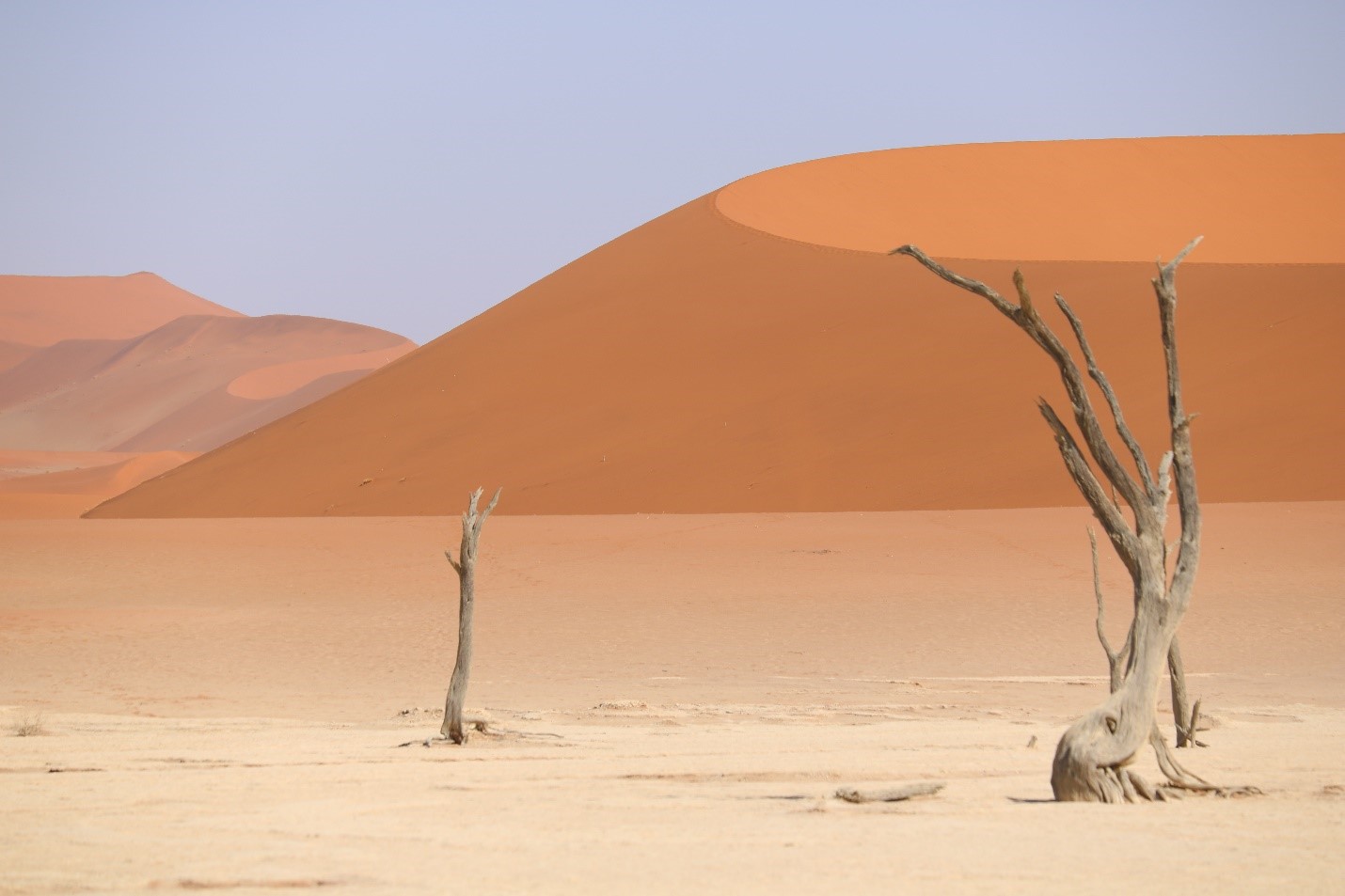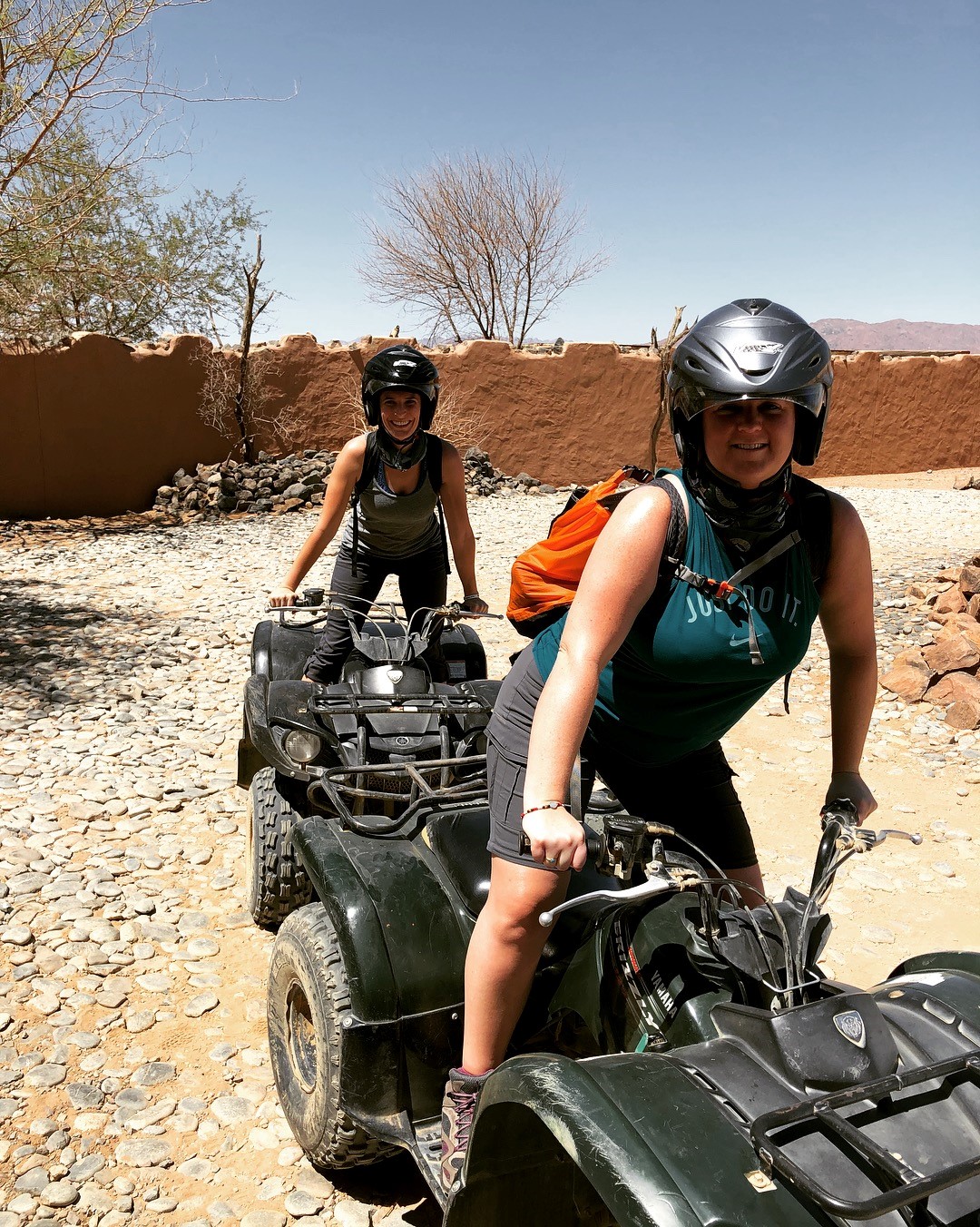Narrowing down your options for an African safari can be tough, but if you ask me, I’d recommend moving Namibia to the top of your travel list! Situated on the southwest coast of Africa, Namibia is home to the world’s oldest desert—the Namib.
The country was the first African nation to include protection of the environment in its constitution, which has helped restore southern Africa’s populations of black rhinos, lions, cheetahs, zebras and other native wildlife. Here are seven reasons to make Namibia your next African adventure.
Reason 1: The Scenery
To say that the landscapes of Namibia are breathtaking is an understatement. And there’s no better way to grasp that than to soar high in a hot-air balloon above Little Kulala Camp in the Sossusvlei region, where you can take in the orange dunes from above at sunrise. Just when you thought the morning couldn’t get any better, you’re treated to a champagne brunch, giving you a chance to reflect on the beauty of the day with your fellow travelers.
Reason 2: The Dunes
The Namib boasts the world’s tallest sand dunes. Seeing the dunes from above is one thing, but trekking on them allows you to grasp their true enormity. Be prepared for the heat, but don’t miss the chance to run down the side of Big Daddy or walk around Deadvlei—a must-see for any photography lovers traveling to Namibia. If you’re lucky, you may spot some of the creatures who call this arid sand sea home, including oryx, ostrich, springbok, hyena, aardwolf, bat-eared fox and the rare dune lark.
Reason 3: Adventure
During my trip, Little Kulala Camp continued to impress by delivering an action-packed adventure on four wheels. The camp offers a quad bike excursion that starts out along the riverbed and then moves onto the same desert plains where we spent much of our time during the day looking for wildlife. We got caught in a sand storm on the way back, which only added to the excitement (and called for laundry service). A fellow traveler remarked on our last night together that this adventure was the highlight of her trip.
Reason 4: Spectacular Accommodations in Remote Locations
When the plane picked us up at the transfer point to head to Hoanib Skeleton Coast Camp, I had no idea what awaited us. I have been fortunate enough to travel throughout several countries in Africa, and no place has ever taken my breath away like Hoanib. Our home for three nights, Hoanib delivered amazing accommodations, food, people, surroundings and wildlife that left me wanting to sign up for my next stay before I had even left. As I wrote in the guest book before departing, I will be back to Hoanib one day.
Reason 5: Unique Wildlife
If you’ve seen Planet Earth 2, then you know about the desert-adapted lions of Namibia. These unique cats have learned to survive on the water in the blood of their prey. The vast area surrounding Hoanib Camp is home to several of these special lions, and the camp itself is the staging point for Philip Stander of the Desert Lion Conservation Project.
With such a large area to cover, encountering these lions can be rare. But I was on a mission, and as we followed along the riverbed our first morning out, our guide, Reagan, spotted some tracks. Eyes peeled, we drove to the top of the riverbed and there they were—laying down with a fresh oryx carcass. These lions, aunt and niece, wore one of Philip’s collars for research and monitoring. We sat there for a while and watched as they enjoyed their meal and remarked at how lucky we were to see these true marvels of nature.
Reason 6: The Coast
Driving from Hoanib Camp to the coast made for another very special day in Namibia. Desert riverbed, to white sand dunes, to rocky coastline, the varying terrains on this one travel day were amazing. After viewing wildlife all along the way, we finally reached the coast and saw the shipwrecks and whale bones that help give the area its name: the Skeleton Coast. Home to a large fur seal colony, November was the perfect time to see all the new life on the coast, including fur seal babies.
To spare us the long ride back to camp, a plane was waiting to take us home, but first there was one more surprise…
Reason 7: Conservation Successes
Namibia is home to a model of community-based conservation in which people and nature thrive in a mutually beneficial relationship. Africa’s rhinos are in grave danger from poachers that are backed by strong and well-equipped criminal networks. Black rhinos, which are fewest in number in Africa, are a species that I have spent much time working to protect as a WWF employee, and it was my dream to see one in the wild.
My dream came true our first night at Ongava Lodge in the Ongava Game Reserve outside of Etosha National Park. I didn’t see just one black rhino, I saw seven, including babies, and I got to witness the species interact with the larger white rhino. Unlike in Etosha, where black rhinos are dehorned for their protection, Ongava has the capacity to protect their rhinos and therefore keeps their horns intact.
Watching a black rhino nurse its baby at close range from the “hide” down by the waterhole was an experience that I will never forget. It reignited the passion I have for the important conservation work that me and my colleagues do every day. I will never forget my first black rhino!
By Abby Wadley
Travel to Namibia with Natural Habitat Adventures and World Wildlife Fund on The Great Namibia Wildlife Safari or our Wild Namibia Photo Safari.































